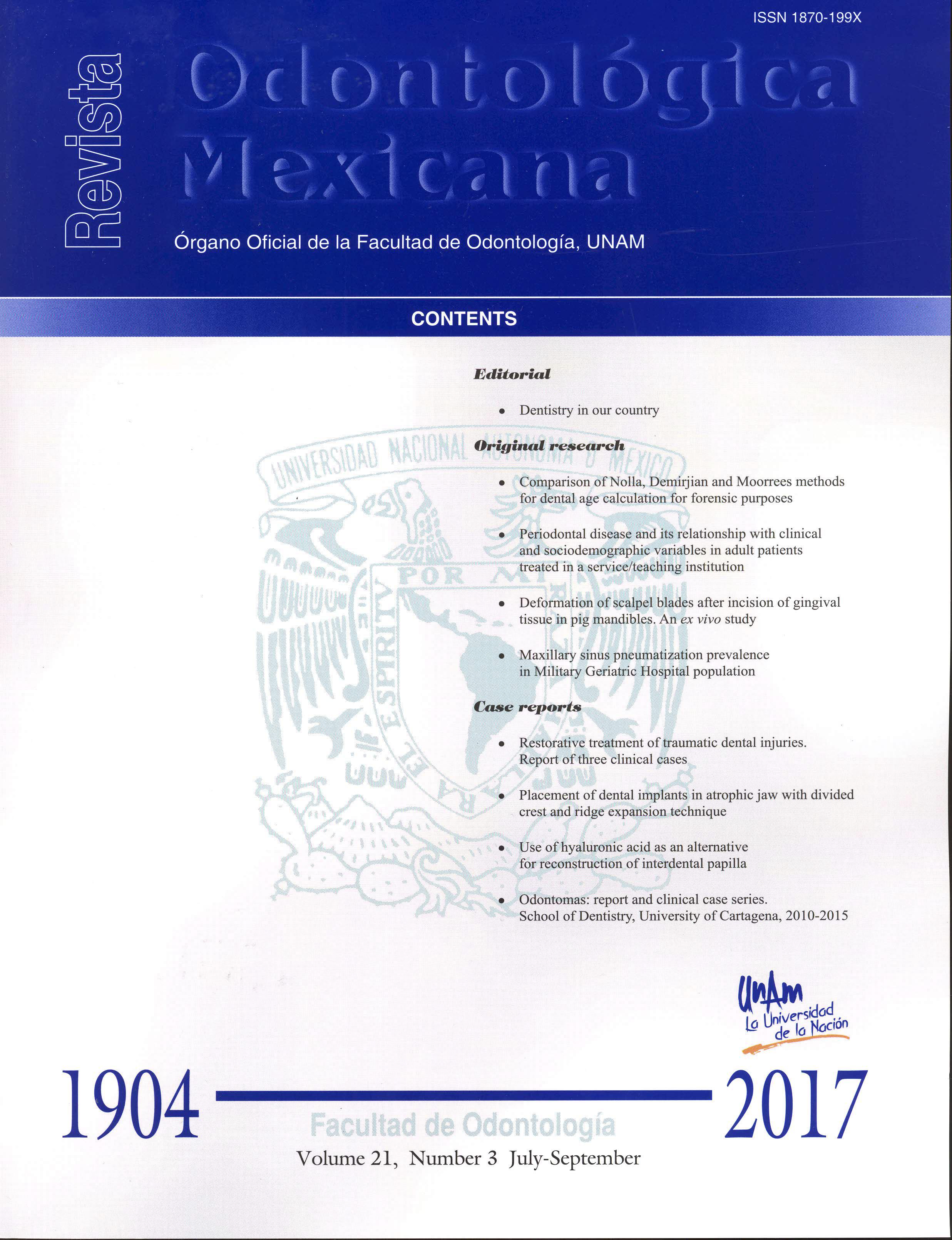Deformation of scalpel blades after incision of gingival tissue in pig mandibles. An ex vivo study
Contenido principal del artículo
Resumen
Introduction: Rheology is the science that studies deformation of objects when submitted to external forces. This science was associated to the scalpel blade, which is a cutting tool of therapeutic importance. Objective: To describe and compare deformation of the cutting surface of Bard Parker No. 15 scalpel blades (Elite® and Paramount® brands), performing one to four cuts in ex vivo pig gums. Material and methods: Comparative-descriptive study. Commercial use pig mandibles were used. Cuts with 20 scalpel blades per brand were performed. A texture analyzer with force to perform these cuts was used, keeping regulated speed and constant position. A stereo-microscope was used to photograph and compare the surface of the scalpel blades before and after being used. ImageJ software was used to measure deformed areas of the scalpel blades in pictures. Results: Average cutting effort from both brands was 49.1 Newton (N), this effort did not statistically differ in each particular brand, Elite® reported an overall cutting effort of 48.1 N [27.2-179.7], meanwhile Paramount® showed 49.1 N [0.0- 60.3] (p = 0.776). The deformations of the scalpel blades were evaluated. For Elite®, 75% of the scalpel blades suffered some kind of deformation; for Paramount®, 90% did. Conclusion: The cutting effort performed by the scalpel blades increases with each incision performed, which influenced directly the physical deformation of each blade.
Detalles del artículo
Cómo citar
Díaz Caballero, A., Tarón Dunoyer, A., Hernández Ligardo, R., Camacho Vergara, Ángel, & Fortich Mesa, N. (2017). Deformation of scalpel blades after incision of gingival tissue in pig mandibles. An ex vivo study. Revista Odontológica Mexicana Órgano Oficial De La Facultad De Odontología UNAM, 21(3). https://doi.org/10.1016/j.rodmex.2017.09.013
Citas en Dimensions Service

Revista Odontológica Mexicana por Universidad Nacional Autónoma de México se distribuye bajo una Licencia Creative Commons Atribución-NoComercial-SinDerivar 4.0 Internacional.
Basada en una obra en http://revistas.unam.mx/index.php/rom.


